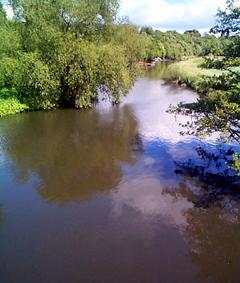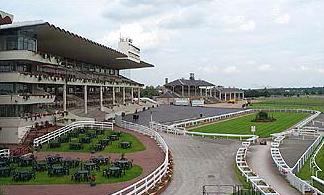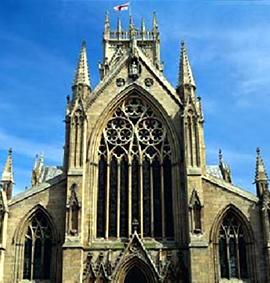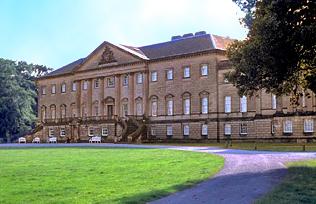Yorksview
Doncaster
| Doncaster stands on the
River Don in the south-east of the West Riding. The Pennine hills are to
the west and Hatfield Chase and the River Trent to the east. So this was
the easiest way for north-south travellers. As Danum it was the first Roman military station in Yorkshire. The legions would rest here en route for York or Hadrian’s Wall. Thus placed on the Great North Road, it became a halt for stage coaches 1500 years later. Then it became a major railway centre. Though now the A1 by-passes the town, and trains from Leeds and Edinburgh don’t always stop, Doncaster is still in many ways Yorkshire’s link with the midlands and the south. For centuries soldiers and friars, nobles and kings, transport workers and travellers have eaten, drunk, slept or often simply waited in Donny. River Don |
|
A charter was granted to Doncaster by Richard the Lionheart in 1194. Shakespeare mentions the town in Henry IV (just as he also mentions nearby Pontefract or ‘Pomfret’). It was in Doncaster that the rebels’ army met that of the king during the Pilgrimage of Grace in the sixteenth century. A battle was averted by a series of promises which were never kept.
|
|
There has been a racecourse
on the Town Moor since the seventeenth century. The St Leger is, of
course, a national institution. It has taken place since 1778, longer
than the Derby has been run at Epsom. Doncaster’s parish church of St George, England’s patron saint, was built by the Victorians. It was designed by Sir George Gilbert Scott because the medieval church was destroyed in a fire in 1853. The 170 foot tower of the church is the town’s most striking landmark. The tower of Christ Church, built in 1827-9, has an eight sided lantern. Doncaster Racecourse |
Among many fine Georgian buildings is the Mansion House, designed by James
Paine and built in the 1740s. It contains a splendid ballroom and banqueting
hall designed to enable the mayor to entertain on a lavish scale. It still
hosts grand occasions like the St Leger dinner and the municipal treasures are
kept here.
The website of Doncaster Rovers, champions of Division 3 in 2003-4, states
with feeling ‘Pride. Passion. Belief’ superimposed on the cross of St George.
To access the site further you have to register and, as usual on these
occasions, I really can’t be bothered if they are going to put obstacles in my
way like that.
| Nearby is Conisbrough Castle
which has a wonderfully intact Norman keep. It inspired Sir Walter
Scott’s Rotherwood in Ivanhoe. Roche Abbey, south of Doncaster but still
in Yorkshire, is built of dazzling white magnesian limestone. It was
founded in 1147 as a Cistercian monastery. In physical contrast, the
blackened ruins of Monk Bretton Priory, a Cluniac house, date from 1154. Brodsworth House is Italian in style, designed by an architect from Tuscany who in fact never visited the site. The legal dispute relating to the property, resolved by the House of Lords after sixty years of litigation, inspired Bleak House by Charles Dickens. Doncaster Church
|
|
|
|
Nostell Priory, between
Doncaster and Wakefield, has been superbly restored recently by our
friends The National Trust. It reflects two architectural periods in the
eighteenth century. Robert Adam was responsible for much fine
plasterwork and Thomas Chippendale furnished the house. It is difficult
to get tradesmen like that nowadays; try looking up ‘Rococo Interiors’
in the Yellow Pages. Nostell Priory
|
There are more than quarter of a million people in Doncaster and the surrounding area. They used to be employed in mining, railway plant construction, making butterscotch and other manufacturing. Much of the old heavy industry has now gone and, like other Yorkshire towns, Doncaster has had to re-define its purpose and identity. It has done so often before since its first role as the camp on the Don



